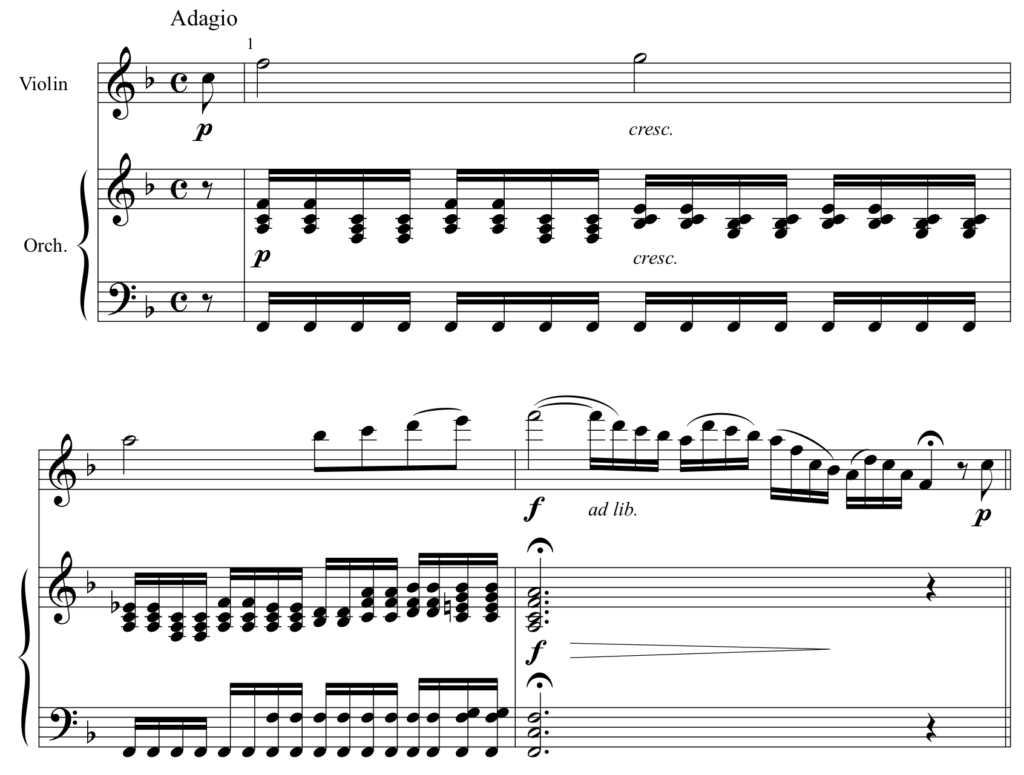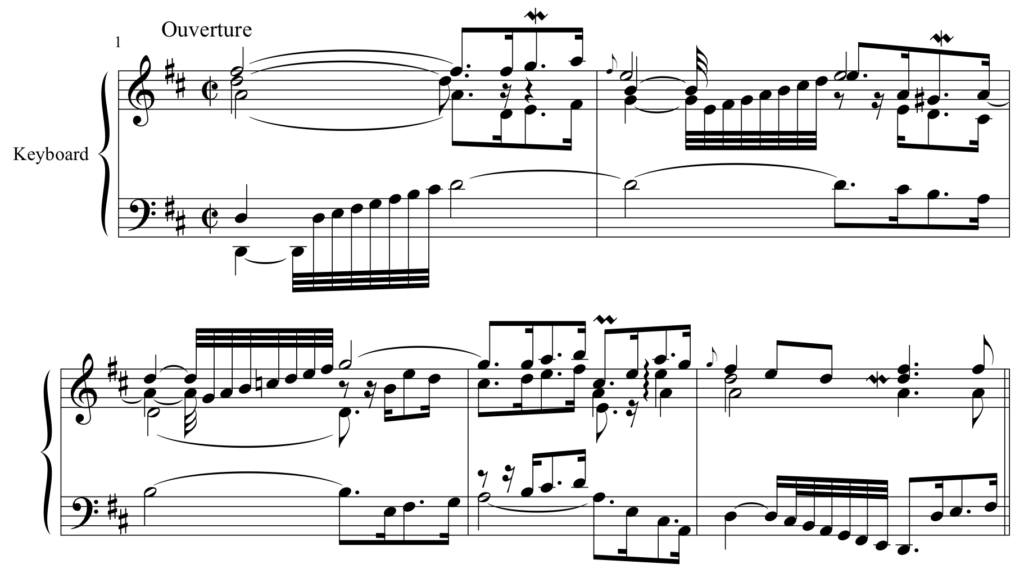Main Body
3 Major scales
Learning goals for Chapter 3
In this chapter, we will learn:
- How to spell and identify half and whole steps
- How to construct major scales
- How to sing major scales, using movable-do solfege and Curwen hand signs
- How major scales are used in musical contexts
Half and whole steps
The smallest meaningful (meaning the measure of distance between two pitches) in music following the European classical tradition, as well as many popular styles, is the . Using a keyboard, half steps are easy to identify because they constitute any two immediately adjacent keys—either a white key and an adjacent black key (e.g., C and D![]() ) or two white keys (e.g., B and C). Half steps may be spelled in one of two ways: half steps always use two different consecutive letter names, such as D and E
) or two white keys (e.g., B and C). Half steps may be spelled in one of two ways: half steps always use two different consecutive letter names, such as D and E![]() , or B and C. half steps always use two versions of the same letter name, such as D and D
, or B and C. half steps always use two versions of the same letter name, such as D and D![]() , or C and C
, or C and C![]() .
.
The interval that results when two half steps are combined is called a . In general, whole steps should be spelled , that is using two different consecutive letter names. Some examples of whole steps include B and C![]() , D and E, and A
, D and E, and A![]() and B
and B![]() . Figure 3‑1 shows some sample half and whole steps as they appear on the keyboard.
. Figure 3‑1 shows some sample half and whole steps as they appear on the keyboard.
Major scales
Diatonic half and whole steps are the building blocks for , which arrange steps in predictable and pleasing ways. Much of the pitch content of Western tonal classical and popular music derives from scales. The most common scale in this repertory is the , which arranges half (H) and whole (W) steps in the following way: W W H W W W H. Example 3‑1 shows this pattern beginning on A; half steps are bracketed.
The first note of any scale, called , is generally considered to be the most important and most memorable note of the scale. The other scale degrees also have names, which are shown above the staff in Example 3‑1. When singing tonal melodies, it is common to use syllables, which are also given in the above example. This book uses the system of movable-do solfege, in which tonic is always “do.”
Video: T04 Intro to major scales (4:02)
This video introduces the concept of major scales, which comprise the following interval pattern: whole-whole-half-whole-whole-whole-half.
Just as conducting helps people embody meter, many people find it useful to use embodied hand gestures associated with singing each scale degree. The hand signs used for each solfege syllable appear in Figure 3‑2.
Video: S01 Solfege and Curwen hand signs (2:08)
This video is an interactive singing video, introducing viewers to the solfege syllables associated with the major scale (do, re, mi, fa, sol, la, ti), and the Curwen hand signs associated with each syllable. These should be practiced and memorized. The term “Curwen” refers to English choral educator John Spencer Curwen (1816–1880), who used the hand signs to correspond with the solfege syllables, following the method created by English music educator Sarah Anna Glover (1785–1867). The term “Kodály” refers to Hungarian composer and pedagogue Zoltán Kodály (1882–1867), who used the hand signs in his teaching practices for developing sight-singing skills. The terms “Glover,” “Curwen,” and “Kodály” can be used interchangeably to refer to the hand signs.
Self-check quiz on solfege and hand signs
Major scales in context
Once you understand how to construct major scales, it is helpful to see and hear how the scales work in musical contexts. To this end, study the six examples in the following exercise. If you would like to be guided through the exercises, see the two “Major scales in context” videos below.
EXERCISE 3-1 Major scales in context
B MAJOR
Write the ascending B major scale below or on a piece of staff paper. Bracket the location of all half steps. Select the right arrow over the image to view the answer.
Listen for the B major scale in the following example.
Worksheet example 3‑1. Patrick Wolf, “The Magic Position,” 0:00–0:29
Listen to the full track, performed by Patrick Wolf, on Spotify.
Learn about English singer-songwriter Patrick Wolf (b. 1983) at the artist’s website.
C MAJOR
Write the ascending and descending C major scale below or on a piece of staff paper. Bracket the location of all half steps. Select the right arrow over the image to view the answer.
Find the ascending and descending forms of the C major scale in the following example.
Worksheet example 3‑2. Wolfgang Amadeus Mozart, K. 265, Variations on “Ah, vous dirai-je, Maman,” var. 7
Listen to the full piece, performed by Balázs Szokolay, on Spotify.
Learn about Austrian composer Wolfgang Amadeus Mozart (1756–1791) by reading this Oxford Music Online article, written by Cliff Eisen and Stanley Sadie.
D![]() MAJOR
MAJOR
Write the ascending D![]() major scale below or on a piece of staff paper. Bracket the location of all half steps. Select the right arrow over the image to view the answer.
major scale below or on a piece of staff paper. Bracket the location of all half steps. Select the right arrow over the image to view the answer.
Listen for the D![]() major scale in the following example.
major scale in the following example.
Worksheet example 3‑3. The Beatles, “Across the Universe” from Let It Be, 3:13–3:47
Listen to the full recording, performed by the Beatles, on Spotify.
Learn about 20th-century English rock band the Beatles and their music by reading this Oxford Music Online article, written by Walter Everett.
F MAJOR
Write the ascending F major scale below or on a piece of staff paper. Bracket the location of all half steps. Select the right arrow over the image to view the answer.
Find the F major scale in the following example.
Worksheet example 3‑4. Franz Joseph Haydn, Violin Concerto no. 1 in C major, Hob. VIIa 1, mvt. 2, mm. 1–3[1]
Listen to the full track, performed by Alberto Lysy, on Spotify.
Learn about Austrian composer Franz Joseph Haydn (1732–1809) by reading this Oxford Music Online article, written by Georg Feder and James Webster.
D MAJOR
Write the D major scale below or on a piece of staff paper. Bracket the location of all half steps. Select the right arrow over the image to view the answer.
Find the D major scale in the following example. Bonus: can you find a G major scale in this excerpt, too?
Worksheet example 3‑5. Johann Sebastian Bach, Keyboard Partita no. 4 in D major, BWV 828, Ouverture, mm. 1–5[2]
Listen to the full recording, performed by Sergey Schepkin, on Spotify.
Learn about German composer Johann Sebastian Bach (1685–1750) by reading this Oxford Music Online article, written by Christoph Wolff and Walter Emery.
G MAJOR
Write the ascending and descending G major scale below or on a piece of staff paper. Bracket the location of all half steps. Select the right arrow over the image to view the answer.
Listen for the descending G major scale in the following example, about 12 seconds in from the beginning of the clip.
Worksheet example 3‑6. Audrye Sessions, “Where You’ll Find Me,” from Audrye Sessions, 2:22–3:06
Listen to the full recording, performed by Audrye Sessions, on Spotify.
Learn about 21st-century American indie band Audrye Sessions by reading this Wikipedia article.
Want more practice spelling major scales? Try these drills:
Practice spelling major scales (teoria)
Practice spelling major scales (musictheory.net)
Video: T05 Major scales in context, part 1 (5:54)
In this video, we begin working on “Major scales in context.” Get a piece of staff paper and a pencil, and get ready to write a B major scale. The payoff? We get to listen to its use in a cool track by Patrick Wolf.
Video: T06 Major scales in context, part 2 (13:29)
This interactive video guides you as you complete the “Major scales in context” exercise, rewarding you with beautiful and exciting musical examples by Mozart, Haydn, Bach, and Audrye Sessions.
Self-quiz: Logic problems with scales and scale degrees
Supplemental resources for Chapter 3
Gilbert DeBenedetti’s chapter on major scales
Robert Hutchinson’s chapter on major scales and key signatures
Andre Mount’s chapter on major scales
Chelsey Hamm and Bryn Hughes’s chapter on major scales, scale degrees, and key signatures (Open Music Theory)
Timothy Chenette’s chapter on solfege (Foundations of Aural Skills)
- Example from https://musictheoryexamples.com/1scales/ScF.pdf by Timothy Cutler ↵
- Example from https://musictheoryexamples.com/1scales/ScA.pdf by Timothy Cutler ↵
the measure of distance between two pitches
In the 12-note Western chromatic scale, the smallest interval between two notes
term referring to notes within a key
term referring to notes outside of a key
interval that spans two half steps
arrangement of stepwise notes, from which melodies and harmonies are formed
arrangement of stepwise notes using the following interval pattern: whole - whole - half - whole - whole - whole - half
the first note of a tonal scale, or the chord built on the first note of a tonal scale
system of associating pitches with syllables, also referred to as "solmization"; with movable-do solfege, the major scale uses "do," "re," "mi," "fa," "sol," "la," and "ti," and "do" is always tonic; with fixed-do solfege, "do" is always C






